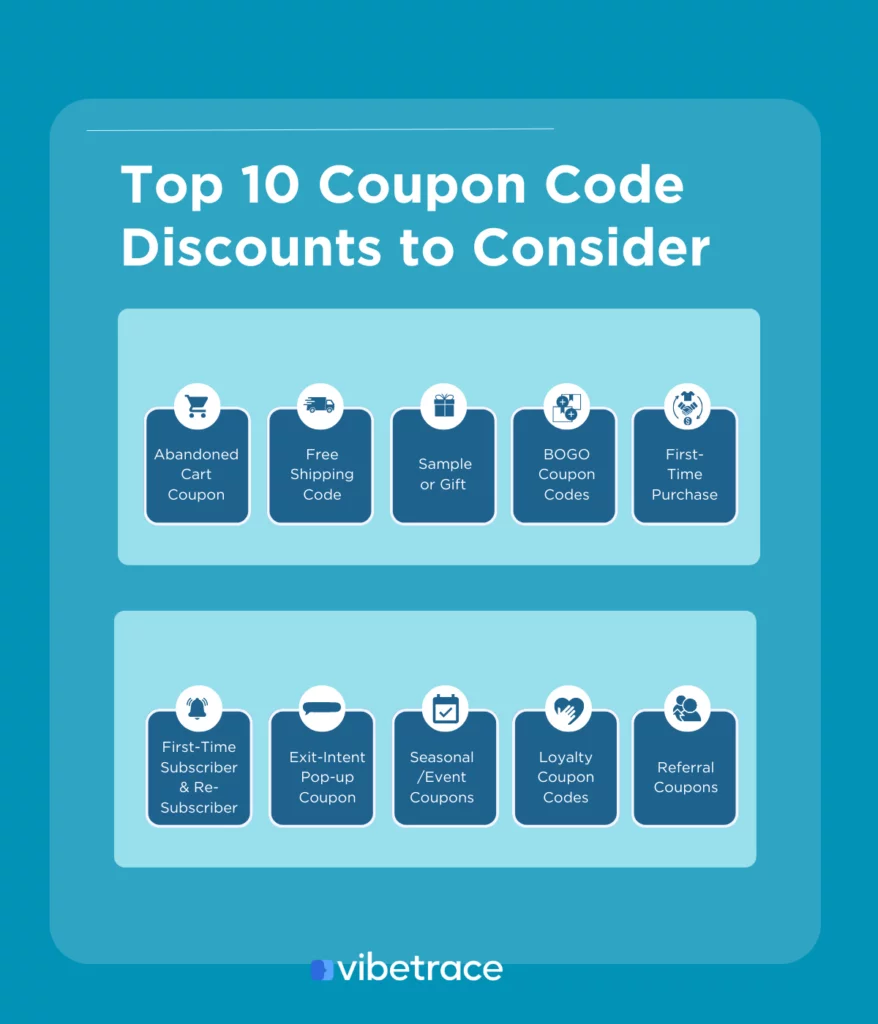Das ist hart. Rabatte sind nicht immer gut. Sehen wir uns die wichtigsten Gründe dafür an.
Wir haben auch eine Vollständige Anleitung zur Verwendung von Gutscheincodes.
Die Kundenanforderungen haben sich seit den Anfängen des E-Commerce drastisch verändert. Es ist nicht mehr so, dass man nur online geht, weil es bequemer ist.
Heute, 66% der Käufer sagen, dass sie maßgeschneiderte Inhalte wünschen, Wert auf ein Erlebnis legen, das über das eigentliche Produkt hinausgeht, und aktiv bei den innovativsten Unternehmen kaufen werden.
Die Reaktionen des Einzelhandels darauf sind unterschiedlich.
Einige haben ihre Produktpalette drastisch erweitert, während andere soziale Medien genutzt haben, um eine clevere Marke aufzubauen und die Herzen der Verbraucher zu gewinnen (manchmal mit Memes). Andere konzentrieren sich auf die Simulation der Erlebnis im Laden mit aufmerksamem Online-Kundenservice.
Eine weitere beliebte Taktik ist das Gewähren von Rabatten.
Viele E-Commerce-Händler haben diese Strategie übernommen, aber sie ist mit mehreren Risiken verbunden. Tatsächlich können Rabatte Ihrem Unternehmen eher schaden als helfen. In diesem schnelllebigen Zeitalter der Automatisierung im Einzelhandel, Ihre flinkeren Konkurrenten könnten Sie leicht unterbieten.
In diesem Leitfaden erklären wir, warum Preisnachlässe geschäftsschädigend sein können.
Wir werden die folgenden Themen ansprechen:
Was sind E-Commerce-Rabatte?
Unter E-Commerce-Rabatten versteht man das Anbieten von Preisnachlässen (einschließlich saisonaler Rabatte, beispielsweise zu Weihnachten), um Kunden dazu zu verleiten, ihr hart verdientes Geld auszugeben.

Manchmal können Preisnachlässe zu großen Verbraucherereignissen werden. Sie kennen sicher schon Black Friday und Cyber Monday, die beiden wichtigsten Zeiträume im Jahreskalender des Online-Einzelhandels.
Online-Einzelhandelsriesen wie Amazon, die den Markt dominieren, senken ihre Preise drastisch. Das zwingt aber auch kleinere E-Commerce-Anbieter, ihre Preise zu senken, und das kann ihnen Probleme bereiten.
Warum legen Einzelhändler so viel Wert auf Rabatte?
Der Online-Bereich ist unglaublich wettbewerbsintensiv. Es gibt so viele E-Commerce-Händler, die um Geschäfte wetteifern, dass es schwierig sein kann, sich von der Masse abzuheben, selbst mit erstklassigen sozialen Medien EinzelhandelsmarketingtechnikenDer einfachste Weg, dies zu erreichen, besteht zunächst vielleicht darin, die Preise zu senken.
Diese Strategie scheint ein todsicherer Gewinner zu sein, wenn es um die Einbindung von Kunden geht. Und es besteht wenig Zweifel daran, dass hohe Preisnachlässe, selbst wenn sie nur für begrenzte Zeit gelten, den Umsatz steigern können.
Aus diesem Grund wird es so häufig als Werbetaktik eingesetzt.
Allerdings können derart überstürzte Preissenkungen die Erwartungen ins Unermessliche steigern. Das bedeutet, dass es schwierig sein kann, die Kunden zu binden und aus Erstkunden Stammkunden zu machen.
E-Commerce-Rabattstrategien können kontraproduktiv sein. Der übermäßige Einsatz von Rabattpreisstrategien kann Ihrem Gewinnmargen, sorgen für illusorische Umsatzsteigerungen und wecken bei Kunden unrealistische Erwartungen hinsichtlich des Werts Ihrer Produkte und Dienstleistungen.
Vorteile von E-Commerce-Rabattstrategien
Rabatte im E-Commerce bieten einige potenzielle Vorteile.
Schauen wir uns die Argumente für Diskontierung genauer an. E-Commerce-Geschäftsmodell.
Stärkt die Kundenbindung
Treue Kunden sind eine wichtige Säule für den Geschäftserfolg. Gerade im Online-Handel ist Loyalität angesichts der Intensität des Wettbewerbs besonders wichtig. Wer Stammkunden halten kann, hat es wahrscheinlich geschafft.
Befürworter hoher Rabattstrategien argumentieren, dass diese die Kundentreue erheblich stärken können, und meinen, große Rabatte seien für die Kunden ein Anreiz, wiederzukommen und weitere Einkäufe zu tätigen.
Manchmal geschieht dies über Treueprogramme (mehr dazu später), sodass die Rabatte nur treuen Kunden und nicht jedem zur Verfügung stehen. Dies kann das Risiko verringern und sie gleichzeitig dazu ermutigen, immer wieder zurückzukehren.
Zieht neue Kunden an
Ein weiterer Punkt, den Vermarkter oft anführen, ist, dass Preisnachlässe ein wirksames Mittel zur Gewinnung neuer Kunden sind.
Wenn sich ein Einzelhändler den Ruf erwirbt, auf neue Produkte unterschiedliche Preisnachlässe anzubieten, kann er durch Empfehlungen und Mundpropaganda einen größeren Kundenstamm aufbauen.
Hilft beim Ausmisten alter Lagerbestände
Einzelhändler haben möglicherweise große Lagerbestände bestimmter Produkte, die sie dann loswerden müssen. Große Rabatte können diesen E-Commerce-Verkaufsstellen helfen, Produkte zu verkaufen und ihre alten Lagerbestände abzubauen.

Dies kann bei der Warenpräsentation im Einzelhandel hilfreich sein und Einzelhändlern ermöglichen, Lagerbestände an Produkten zu verkaufen, die nicht der Saison entsprechen, ohne sie einfach abschreiben zu müssen.
Verbessert die Sichtbarkeit
Wir haben bereits erwähnt, dass es schwierig ist, aus der Masse der Online-Händler hervorzustechen.
Jeder versucht, attraktive Angebote zu präsentieren, von Prozentrabatten und Rabattcodes bis hin zu Gutscheinen, um sich gegenüber der Konkurrenz einen Vorteil zu verschaffen. Große Rabatte sind eine Möglichkeit, die Aufmerksamkeit der Verbraucher zu erregen.
Verbessert den Umsatz in ruhigen Zeiten
Jeder erfahrene Online-Händler weiß, dass die Umsätze zu verschiedenen Jahreszeiten schwanken können. In ruhigeren Zeiten können Rabatte ein wirksames Mittel sein, um den Umsatz anzukurbeln und Benutzer zum Online-Checkout zu bewegen.
Erwähnenswert ist auch, dass Preisnachlässe dazu beitragen können, die Zahl der abgebrochenen Einkäufe zu verringern, was bei Online-Händlern ein häufiges Problem darstellt.
Tatsächlich mehr als zwei Drittel der weltweiten Online-Käufer verlassen ihre Karren irgendwann vor oder während des Bezahlvorgangs.
Um dem entgegenzuwirken, senden manche Einzelhändler ihren Kunden E-Mails zu abgebrochenen Warenkörben mit einem Rabattcoupon, um sie dazu zu bewegen, zurückzugehen und ihren Einkauf abzuschließen.
Nachteile von E-Commerce-Rabattstrategien
Nachdem wir uns nun die Pluspunkte von E-Commerce-Rabatten angesehen haben, müssen wir die Nachteile besprechen – denn anders als manche Leute vielleicht behaupten, gibt es diese tatsächlich.

Manche Einzelhändler betrachten Preisnachlässe als Allheilmittel und als die Antwort auf alle Probleme. Doch die Realität ist viel komplizierter, wie wir hier weiter erläutern werden.
Kunden erwarten Rabatte
Eines der unmittelbaren Probleme bei übermäßigem Vertrauen in Rabatte besteht darin, dass die Kunden diese schnell erwarten. Dies kann die Erwartungen auf ein unrealistisches Niveau heben und den Verbrauchern den Eindruck vermitteln, dass Sie häufig große Rabatte anbieten werden.
Wenn Sie diese Erwartungen nicht erfüllen können, werden Sie möglicherweise feststellen, dass Sie fast ebenso schnell Kunden verlieren, wie Sie neue gewinnen.
Entwertet Ihre Produkte
Hohe Preisnachlässe können den Wert Ihrer Produkte sowohl im übertragenen als auch im finanziellen Sinne mindern. Wenn Sie eine bestimmte Art von Kundschaft ansprechen möchten, stellen Sie möglicherweise fest, dass es kontraproduktiv ist, die Preise zu senken, nur um die Leute ins Geschäft zu locken.
Unternehmen, die einen Kundenstamm im gehobenen Segment aufbauen möchten, stellen möglicherweise fest, dass hohe Preisnachlässe den falschen Eindruck erwecken.
Könnte einen Preiskrieg auslösen
Wenn Sie Ihre Preise drastisch senken, wundern Sie sich nicht, wenn Ihre Konkurrenz ähnliche Maßnahmen ergreift.
Es besteht eine gute Chance, dass sie genauso denken wie Sie: dass man den Umsatz steigern kann, indem man die Preise senkt. Aber das kann einen Preiskrieg auslösen, und wenn man erst einmal in dieser Spirale ist, ist es sehr schwer, wieder herauszukommen.
Leider gibt es einen Mindestpreis, zu dem Sie Ihre Produkte verkaufen müssen, bevor Sie Verluste machen, und wenn Ihre Konkurrenten Ihren Preis weit genug drücken können, geraten Sie schon bald in finanzielle Schwierigkeiten.
Kann Ihre Gewinne beeinträchtigen
Im Anschluss an unseren vorherigen Punkt kann eine Preissenkung Ihre Gewinne. Zu viele Online-Händler scheinen das nicht zu begreifen; sie glauben immer noch, dass Preissenkungen den Absatz und damit auch den Umsatz steigern. Aber so einfach ist es nicht.
Übermäßige Preisnachlässe können Ihre Finanzen insgesamt schädigen, auch wenn sie die Anzahl Ihrer verkauften Artikel erhöhen.
Verändert die Wahrnehmung Ihrer Marke
Es ist hier noch einmal zu betonen, dass eine übermäßige Abhängigkeit von Rabatten die Wahrnehmung Ihrer Marke verändern kann. Wenn Sie sich als Schnäppchenjäger positionieren möchten, ist das kein so großes Problem.
Wenn Sie jedoch Wert auf Qualität und Exklusivität legen möchten, können Preisnachlässe Ihre Attraktivität erheblich beeinträchtigen.
Betrachten Sie es noch einmal aus der Sicht des Verbrauchers. Wenn Sie einen Online-Händler sehen, der mit Rabatten wirbt, halten Sie ihn dann für eine High-End-Marke? Wahrscheinlich nicht.
Wie Rabattpreisstrategien Ihrem Unternehmen schaden können
Es lässt sich nicht leugnen, dass Rabattstrategien für Unternehmen verlockend sind. Viele Unternehmen sind jedoch kopfüber in die Fallstricke getappt, die mit übermäßigem Vertrauen in Rabatte einhergehen können. Wir werden uns hier einige dieser Fallstricke ansehen.
Sie können einen Wettlauf nach unten auslösen
Wir haben bereits erwähnt, dass Preisnachlässe schädliche Preiskriege auslösen können, die sich auf Ihr gesamtes Unternehmen auswirken und möglicherweise sogar dessen finanzielle Überlebensfähigkeit gefährden können.
Zu viele Online-Händler, die sich einen Namen machen wollen, stürzen sich Hals über Kopf in auffällige Preisnachlässe, ohne sich Gedanken über die möglichen Folgen zu machen.
Wenn Sie Rabatte zum Eckpfeiler Ihrer E-Commerce-Strategie machen, stellen Sie möglicherweise schon bald fest, dass Sie damit überfordert sind.
Es kann passieren, dass Sie Ihre Konkurrenten in einen regelrechten Wettlauf nach unten hineinziehen (oder von ihnen hineingezogen werden), und dass Sie gezwungen sind, an anderer Stelle Abstriche zu machen, nur um das Preisnachlasstempo aufrechterhalten zu können.
Umsatzsteigerungen können zu schön sein, um wahr zu sein
Es stimmt, dass Preisnachlässe eine einfache Möglichkeit sein können, schnell für höhere Umsätze zu sorgen und die Abbruchrate von Kaufvorgängen zu senken.
Doch die Gefahr besteht darin, dass dieser Umsatzanstieg nur trügerisch ist. Er könnte dazu führen, dass Sie Nachfrageprognosen erstellen, die sich als zu optimistisch erweisen, weil Ihr Unternehmen diese einfach nicht erfüllen kann.
Das Problem bei solchen Annahmen ist, dass sie Ihnen ein grundlegend falsches Bild von der tatsächlichen Leistung Ihres E-Commerce-Shops vermitteln können. Sie könnten den falschen und möglicherweise ziemlich gefährlichen Eindruck vermitteln, dass für die Zukunft ein kurzer, starker Wachstumsschub prognostiziert werden kann.
Grundlegende Probleme bleiben möglicherweise ungelöst
Da Preisnachlässe einen falschen Eindruck von der Leistung eines Online-Einzelhandelsgeschäfts vermitteln können, kann dies auch dazu führen, dass Probleme des Unternehmens übersehen und daher nicht behoben werden. Allzu oft werden Preisnachlässe eingesetzt, um Lücken im Online-Einzelhandel zu schließen – doch dahinter können sich künftig weitere Probleme verbergen.
Wenn Sie sich also zu sehr auf hohe Preisnachlässe verlassen, kann das Ihre Aussichten auf zukünftigen Erfolg im E-Commerce beeinträchtigen. Anstatt auf Preisnachlässe zu setzen, sollten Sie besser in Tools wie Bestandsverwaltungssoftware und Einzelhandelsbuchhaltungssoftware investieren, um Ihr Unternehmen für zukünftige Herausforderungen zu rüsten.
Ihr Ruf könnte Schaden nehmen
Preissenkungen können einen Ruf erlangen, den man nur schwer wieder los wird. Es hängt alles davon ab, was Sie erreichen wollen; wenn Sie gerne sparsam und fröhlich sind, wird Sie das wahrscheinlich nicht allzu sehr beunruhigen.
Einzelhändler, die einen gehobeneren Status anstreben, könnten es jedoch bereuen.
Bevor Sie Rabattstrategien in Angriff nehmen, sollten Sie sorgfältig überlegen, welche Zielgruppe Sie ansprechen möchten und wie Sie Ihr Unternehmen der gewünschten Kundenbasis präsentieren möchten. Gehen Sie nicht einfach davon aus, dass jeder ein günstiges Angebot liebt.
Im Gegensatz dazu stellen Sie möglicherweise fest, dass übermäßige Rabatte Sie mit den Kunden, die Sie ansprechen möchten, in Konflikt bringen oder sie dazu veranlassen, sich woanders umzusehen. Sie möchten nicht, dass sie denken, Ihre Produkte seien minderwertiger, billig herzustellender Ramsch.
Warum Kunden mehr als nur Rabatte wollen
Zwar sind viele Verbraucher auf der Suche nach Schnäppchen, ihre Beweggründe sind jedoch komplexer.
Sie reagieren positiv auf andere Anreize als niedrige Preise, und wie wir bereits dargelegt haben, können Preissenkungen manchmal die falschen Signale aussenden. Das Kundenerlebnis als Ganzes muss eine Reihe von Faktoren berücksichtigen.
Verbraucher legen großen Wert auf Qualität und erkennen, wenn an falschen Stellen gespart wird.
Sie haben sicher schon einmal die Erfahrung gemacht, dass sie etwas scheinbar günstiges gekauft haben, es dann aber innerhalb kürzester Zeit in Stücke zerfiel. Kunden, die es sich leisten können, sind oft auch bereit, für das Gefühl von Luxus oder Exklusivität einen Aufpreis zu zahlen.
Sie sind möglicherweise bereit, mehr für ein Produkt zu bezahlen, das nur in begrenzten Mengen oder für eine begrenzte Zeit verfügbar ist.
Dies wiederum vermittelt den Eindruck von Exklusivität und gibt den Verbrauchern das Gefühl, etwas Besonderes zu sein. Viele werden bereit sein, für dieses Privileg mehr zu bezahlen.
Auch Einzigartigkeit ist etwas, worauf Konsumenten großen Wert legen.
Wenn Sie Ihren Kunden zeigen können, dass Ihre Produkte sich von allen anderen auf dem Markt unterscheiden und Ihre Konkurrenten einfach nicht mithalten können, werden sie höchstwahrscheinlich positiv reagieren.
Auf diese Weise können Sie sich als Marktführer und echter Innovator etablieren und Ihre Marke aufbauen.
Kunden haben auch andere Wünsche, und wenn Sie diese erfüllen können, kann Ihr Unternehmen unglaublich erfolgreich sein. Wenn Sie sich jedoch auf hohe Preisnachlässe konzentrieren, kann dies Ihre Fähigkeit beeinträchtigen, davon zu profitieren.
Strategien, die Sie neben Rabatten anwenden können
Wir sagen nicht, dass Sie niemals einen Rabatt anbieten sollten. Aber wie wir bereits gesehen haben, ist es eine Taktik, die sparsam und in Verbindung mit anderen Methoden eingesetzt werden sollte. Neben Rabatten haben sich verschiedene andere Strategien bewährt, die sowohl Pop-up-Händlern als auch etablierten Online-Giganten helfen, ihre Geschäftsziele zu erreichen.
Sie können beispielsweise Abbildung der Customer Journey um das Verhalten und die Motivationen der Kunden zu verstehen und so herauszufinden, was sie wirklich von Ihrem Unternehmen wollen.
Sie können sie dann mit personalisierte Kommunikation um den Verkauf zu fördern, indem Sie weniger auf Rabatte angewiesen sind – und um Ihre Kontaktpunkte für ein besseres Erlebnis zu verbessern.
Hier sind einige andere Ansätze, die Sie vielleicht in Betracht ziehen möchten.
Nutzen Sie Werbegeschenke
Wenn es etwas gibt, das die überwältigende Mehrheit der Verbraucher liebt, dann ist es ein Gratisgeschenk. Es ist wie Katzenminze: Wie sehr der typische Kunde auch versucht, der Verlockung eines Gratisgeschenks zu widerstehen, in neun von zehn Fällen ist es ihm egal.
Vielleicht könnten Sie also in Erwägung ziehen, einer bestimmten Bestellung ein kleines Gratisgeschenk beizulegen (das ist auch eine gute Möglichkeit, alte Lagerbestände loszuwerden).
Auch kostenloser Versand kann viel dazu beitragen, Kunden sozusagen zum Kauf zu bewegen. Amazon hat das wirklich gut gemacht. Kunden erwarten dies zunehmend.
Wenn Sie clever vorgehen und das Angebot nur ab einem bestimmten Betrag anbieten, können Sie Ihre Kunden auch dazu anregen, mehr zu kaufen, wodurch der durchschnittliche Bestellwert steigt. Stellen Sie einfach sicher, dass Sie mit der Umsatzsteuer für den Versand in verschiedene Länder vertraut sind.
Nutzen Sie Treueprogramme
Wir haben bereits erwähnt, wie wichtig die Kundenbindung für den langfristigen Erfolg im Online-Handel ist. Wenn Sie Ihre Kunden wirklich an Ihr Unternehmen binden und ihnen einen guten Anreiz bieten möchten, regelmäßig wiederzukommen, warum starten Sie dann nicht ein Treueprogramm?
Geben Sie Ihren Kunden die Möglichkeit, Punkte zu sammeln und einzigartige Angebote zu nutzen. Treueprogramme sind bewährte Gewinner.
Seien Sie erfinderisch beim E-Mail-Marketing
Damit E-Mail-Marketing funktioniert, müssen Sie Ihren Kundenstamm genau kennen, um effektiv mit ihm kommunizieren zu können.
Auch die Segmentierung ist wichtig, da Sie damit E-Mails versenden können, die auf bestimmte Teile Ihres Kundenstamms zugeschnitten sind.
Kunden lieben auch personalisierte Angebote. Wenn Sie Ihren Kunden beispielsweise die Möglichkeit geben, Ihnen bei der Registrierung auf Ihrer Website ihr Geburtsdatum mitzuteilen, können Sie ihnen an ihrem Geburtstag eine automatisierte E-Mail mit einem einzigartigen Angebot senden.
Es könnte sogar ein kleiner Rabatt sein, solange Sie es nicht übertreiben.
Betonen Sie Ihr Fachwissen
Wenn Verbraucher ein Produkt oder eine Dienstleistung von einem bestimmten Unternehmen kaufen, möchten sie die Gewissheit haben, dass das betreffende Unternehmen ein echter Marktführer in seinem Bereich ist. Sie möchten sicher sein, dass sie etwas bekommen, was sie nirgendwo anders bekommen können.
In Ihren Botschaften an Ihre Kunden sollten Sie darauf achten, dass Sie diesen Punkt wirklich deutlich machen. Zeigen Sie ihnen, wie Sie einzigartiges Fachwissen anbieten. Sie machen ihnen auf subtile Weise klar, dass sie den vollen Preis bezahlen sollten, da Ihre Produkte und Dienstleistungen es wert zu sein scheinen.
Bieten Sie außergewöhnlichen Kundenservice
Wenn Verbraucher darauf vertrauen können, dass sie Sie jederzeit erreichen können – sei es bei einer Frage zu einem bestimmten Produkt oder einem Problem mit einem gekauften Artikel –, ist die Wahrscheinlichkeit, dass sie wiederkommen, viel größer.
Möglicherweise möchten Sie lieber über ein eigenes Supportteam verfügen oder Sie könnten den Betrieb an einen Business Process as a Service (BPaaS)-Anbieter auslagern, um mehr Interaktionen abzuwickeln.
In jedem Fall hilft ein guter Service dabei, die Lücke zwischen dem Online-Erlebnis und dem Einkaufserlebnis im Geschäft zu schließen, was den Verbrauchern nach wie vor wichtig ist.
Geführter Verkauf ist eine gute Möglichkeit, diese Lücke zu schließen. Es handelt sich um ein Tool, das Kunden durch das Stellen einiger einfacher Fragen zu relevanten Produkten führt.
Dies hilft ihnen dabei, das Gesuchte zu finden und macht sie sogar mit coolen Produkten bekannt, von denen sie vorher gar nicht wussten, dass sie sie haben wollten.
Personalisierung ist wichtig
Personalisierung ist so wichtig. Sie müssen bedenken, dass Ihre Kunden vielbeschäftigte Menschen sind, die viel um die Ohren haben.
Also personalisierte Produktempfehlungen sind sehr nützlich, da sie den Kunden unnötige Zeit und Mühe ersparen und ihnen so den Freiraum geben, sich um alles andere zu kümmern, was sie tun müssen.
Digital Assistants können Kunden zudem mit Hilfe und Unterstützung versorgen und sie bei jedem Schritt des Verkaufstrichters begleiten.
Sie können damit die Bedürfnisse und Vorlieben Ihrer Kunden besser verstehen und sie durch personalisierte Empfehlungen zu Kaufentscheidungen anregen. Antworten auf häufig gestellte Fragen können sogar automatisiert werden.
All dies kann die Kundenbindung stärken, ohne dass Sie Ihre Preise senken müssen.
Es liefert nachweislich auch messbare Ergebnisse. Klein, ein Concept Fashion Store, konnte nach der Einführung des digitalen Assistenten von Ve seine Engagement-Rate um gewaltige 2191 TP3T steigern. Die Conversion-Rate stieg gleichzeitig um beeindruckende 281 TP3T.
Die richtige Balance finden
Zum Abschluss sollten wir wahrscheinlich eine kurze Klarstellung vornehmen. Nur weil es schlecht fürs Geschäft ist, zu viel auf Rabatte zu setzen, heißt das nicht zwangsläufig, dass Sie niemals Rabatte anbieten sollten.
Natürlich können Preisnachlässe, wenn sie mit Bedacht eingesetzt werden, gut dazu geeignet sein, neue Kunden zu gewinnen und bestehenden Kunden eine kleine Belohnung für ihre Treue zu geben.
Gehen Sie dabei jedoch mit etwas Vorsicht vor, denn ein übermäßiges Vertrauen in Rabatte wird Ihrem Geschäft auf lange Sicht wahrscheinlich nicht guttun.
Im E-Commerce herrscht ein harter Wettbewerb und wenn Sie sich einen Namen machen wollen, kann es verlockend sein, den Preis Ihrer Konkurrenten zu unterbieten. Das Problem ist, dass diese Taktik auf verschiedene Weise nach hinten losgehen kann.
Es gibt zahlreiche andere Möglichkeiten, Kunden zu gewinnen und zu binden. Und diese wirken sich wahrscheinlich auch positiv auf Ihr Geschäftsergebnis aus.
Die Grundlagen richtig zu verstehen, ist im Online-Handel die halbe Miete.
Dinge wie die Geschäftsabwicklung sind vielleicht nicht so glamourös oder auffällig wie eine Preissenkung, aber wenn Sie sich darauf konzentrieren, die Grundlagen absolut perfekt zu machen, dürfte das Ihrem Unternehmen auf lange Sicht mehr nützen.

